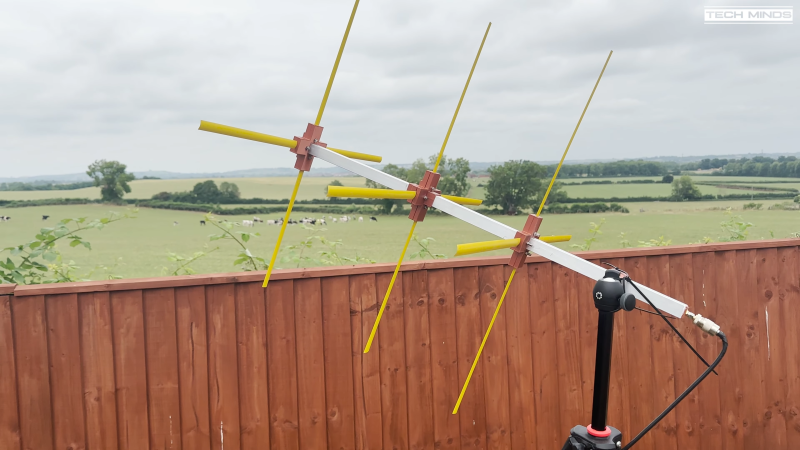A Quick and Easy Tape Measure Turnstile Antenna for MILSAT Snooping

The number of satellites whizzing by over our heads at any moment is staggering, and growing at a rapid rate as new constellations are launched. But sometimes it’s the old birds that are the most interesting, as is the case with some obsolete but still functional military communications satellites, which thanks to a lack of forethought are largely unsecured and easily exploitable. And all that’s needed to snoop in on them is a cheap ham radio and something like this simple and portable satcom antenna.
As proof of the global nature of the radio hobby, the design in the video below by Brit [Tech Minds] borrows heavily from previous work by Italian ham [Ivo Brugnera (I6IBE)], which itself was adapted to use 3D-printed parts in a German blog post a few years ago. The common thread is the use of tape measures for the elements of the aptly named turnstile antenna, a tried and true material for lightweight, foldable antennas that amateur radio enthusiasts have been using for years. The antenna is similar in design to the classic three-element Yagi-Uda, with a crossed pair of driven elements in the middle of a boom that also supports a reflector and a director. Strips of tape measure material are held to the 20-mm aluminum tubing boom with 3D-printed brackets. A phasing harness of precisely cut coax cable connects to the driven elements and runs down the boom; the quarter-wavelength loop serves to introduce the 90° phase shift needed for the circularly polarized signal from the satellites.
A quick scan with a vector antenna analyzer showed just how well this antenna performs on the 220-MHz band, and the antenna was easily able to pick up the Brazilian satellite pirate’s chatter. The tape measure elements make the antenna easy to handle and foldable, not to mention pretty cheap to build. And what’s not to love about that?
from Blog – Hackaday https://ift.tt/G4jtxaP
Comments
Post a Comment